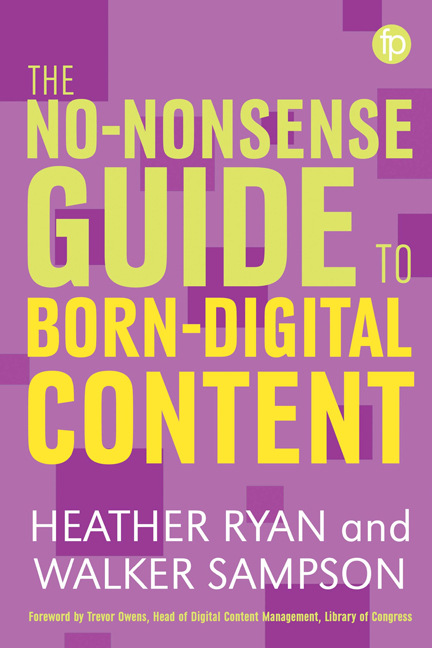Book contents
- Frontmatter
- Contents
- List of figures and tables
- Foreword
- Acknowledgements
- List of abbreviations
- Glossary
- Introduction
- 1 Digital information basics
- 2 Selection
- 3 Acquisition, accessioning and ingest
- 4 Description
- 5 Digital preservation storage and strategies
- 6 Access
- 7 Designing and implementing workflows
- 8 New and emerging areas in born-digital materials
- Conclusion
- References
- Appendix A Resources
- Appendix B Basic Unix command line prompts
- Index
6 - Access
Published online by Cambridge University Press: 08 June 2018
- Frontmatter
- Contents
- List of figures and tables
- Foreword
- Acknowledgements
- List of abbreviations
- Glossary
- Introduction
- 1 Digital information basics
- 2 Selection
- 3 Acquisition, accessioning and ingest
- 4 Description
- 5 Digital preservation storage and strategies
- 6 Access
- 7 Designing and implementing workflows
- 8 New and emerging areas in born-digital materials
- Conclusion
- References
- Appendix A Resources
- Appendix B Basic Unix command line prompts
- Index
Summary
Technology wants us, but what does it want for us? What do we get out of its long journey?
(Kevin Kelly, What Technology Wants, 2010, 347)Providing access to born-digital content can be both straightforward and exceedingly complex. For those files that are simple, standalone and in common file formats, providing access can be as simple as double-clicking on the file to open it in a contemporary computer with a standard suite of software installed. This is currently true of standalone PDF, DOCX, PPT, JPG, MP3 and AVI files, but less true of older file types like WordPerfect and Windows Media Audio, as well as complex proprietary formats – for example, older versions of AutoCAD. You will also have special considerations to keep in mind when providing access to e-mail, website and mobile device content.
There are several options for providing access to your born-digital content, each with its own benefits and challenges. You may be considering providing unrestricted online access to your content, some form of restricted online access or on-site-only access; you may want to provide a combination of these methods. In this chapter, we'll take a look at some of the options that are available to you for online, remote and restricted on-site access and review some of the additional things you will need to consider for providing access to born-digital content generally.
Deciding on your access strategy
There are several things that you will need to consider when developing your access strategy. First, you will need to have an understanding of the nature of your current and future born-digital content with regard to: the format-specific hardware and software needed in order to provide access; access restrictions imposed by law or donor agreements; and the significant properties inherent to the content that you may or may not need to preserve. Second, you will need to understand your current technological infrastructure and what it can and can't support, as well as have a roadmap for expanding and adapting this infrastructure as your needs grow and the technological landscape changes. Last, it is very important to know your users’ requirements for accessing your content.
- Type
- Chapter
- Information
- The No-nonsense Guide to Born-digital Content , pp. 129 - 152Publisher: FacetPrint publication year: 2018



